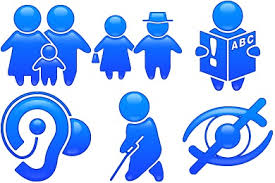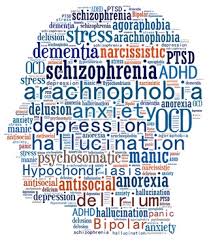
Hidden disabilities are a physical or mental impairment that significantly limits a person’s ability to move, effects senses, intellectual processing, behavior, learning, and the type of activities a person may do.
 According to the National Union of Journalists, “the impact of hidden disabilities on daily life and study can be considerable.” Hidden disabilities often interfere with concentration and stamina, as can the medications that are used to treat them. The reason a learning disability is a hidden disability is because like other hidden disabilities it can lead to a behavior that can be harmful emotionally to the individual or to others or impair social development.
According to the National Union of Journalists, “the impact of hidden disabilities on daily life and study can be considerable.” Hidden disabilities often interfere with concentration and stamina, as can the medications that are used to treat them. The reason a learning disability is a hidden disability is because like other hidden disabilities it can lead to a behavior that can be harmful emotionally to the individual or to others or impair social development.
 Hidden disabilities are sometimes referred to as “invisible”. However, it is the belief of this author that these disabilities are not invisible, rather hidden because not only are they invisible to the eye, they can be concealed, kept secret, could actually be unknown, or not noticed by others which include: Mental health challenges, Allergies, Amnesia, Asperger Syndrome, Asthma, Brain injuries, Chronic Fatigue Syndrome, Crohn’s Disease, Memory loss, Epilepsy, Depression, Inflammatory bowel disease, Lupus, Lyme Disease, Cancer, Chronic Pain, Migraines, Multiple Sclerosis, Parkinson’s Disease, Alzheimer’s, Sickle Cell Anemia, Personality Disorders, Reflex Sympathetic Dystrophy (RSD), Rheumatoid Arthritis, Chronic Reflex Sympathetic Pain Syndrome (CRPS), Horner’s Syndrome, Ulcerative Colitis, Hypoglycemia, Endometriosis, and so many more.
Hidden disabilities are sometimes referred to as “invisible”. However, it is the belief of this author that these disabilities are not invisible, rather hidden because not only are they invisible to the eye, they can be concealed, kept secret, could actually be unknown, or not noticed by others which include: Mental health challenges, Allergies, Amnesia, Asperger Syndrome, Asthma, Brain injuries, Chronic Fatigue Syndrome, Crohn’s Disease, Memory loss, Epilepsy, Depression, Inflammatory bowel disease, Lupus, Lyme Disease, Cancer, Chronic Pain, Migraines, Multiple Sclerosis, Parkinson’s Disease, Alzheimer’s, Sickle Cell Anemia, Personality Disorders, Reflex Sympathetic Dystrophy (RSD), Rheumatoid Arthritis, Chronic Reflex Sympathetic Pain Syndrome (CRPS), Horner’s Syndrome, Ulcerative Colitis, Hypoglycemia, Endometriosis, and so many more.
Hidden disabilities are being recognized in many places, including movies and video. For example, Will Smith’s movie “Concussion” is about brain injury and the National Football League. Former fashion model and publicist Karen “Kay” Stephens promotes awareness of traumatic brain injury in a touching one-minute video released on her YouTube Channel Model Behavior with Kay Stephens, “The Face of TBI”.
Pingback: Many of us take our brains for granted | Missing Frames
Pingback: What’s the point? | Missing Frames
Pingback: Shaken or Stirred…? | Missing Frames
Pingback: Did You Know? | Missing Frames
Pingback: “Social Isolation” is a health issue | Missing Frames
Pingback: Did you know e-learning must be compliant? | Missing Frames
Pingback: The National Center on Criminal Justice and Disability | Missing Frames
Pingback: What help looks like | Missing Frames
Pingback: Does Your Disability Affect Your Sense of Self? | Missing Frames
Pingback: Expanding The Modernizing Elite | Missing Frames
Pingback: Hidden disabling ailments | Missing Frames
Pingback: Sudden Life Change… how do I deal with it?! | Missing Frames
Pingback: Simone Biles is in good company or should I say we are in good company. | Missing Frames
Pingback: Hidden Disability Does Not Mean Disadvantaged. | Missing Frames
Pingback: Unseen Maladies | Missing Frames